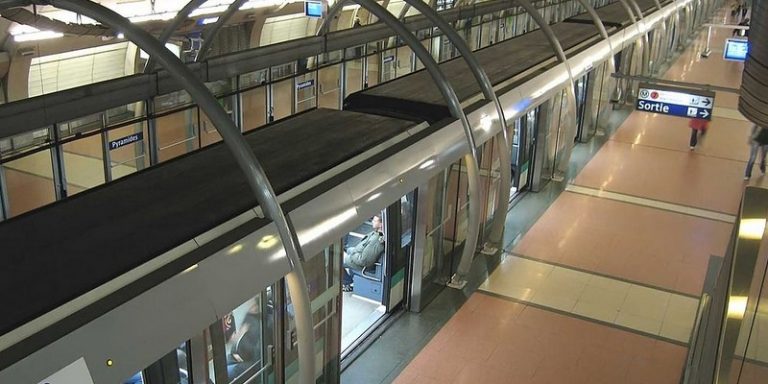
The Régie autonome des transports parisiens (RATP) has been experimenting since May 25 with an AI-based tool at the Gare de Lyon station on line 14 of the Paris Metro. This is a flow management aid: the aim is to make movement on the platforms more fluid and prevent any risk of heavy traffic. For three months, the system will be tested in order to improve the experience of Paris metro users by offering them real-time information and alternative transport solutions.
Increased traffic on line 14 by 2024
Since 14 December 2020, line 14 has been extended to the north, from Gare Saint-Lazare to Mairie de Saint-Ouen. This 5.8-kilometre extension is intended to relieve congestion on line 13 of the Paris metro, one of the busiest lines in the network, which is overloaded, particularly during rush hour, on the section between the two forks leading to Saint-Denis Université and Les Courtilles.
Line 14 will subsequently be extended to the south, towards Orly airport. When it opens in 2024, ridership is expected to increase by 50%, bringing the total number of daily trips on the line to 1 million. Hence the importance of proposing a system to make travel more fluid.
An artificial intelligence system to smooth travel
The system uses existing video protection cameras in the metro stations, as well as artificial intelligence to measure the density of passengers on the platforms in real time. A screen will inform users and the control room of the number of passengers in the stations in near real time and will propose solutions to facilitate the travel experience. For example, if a user wants to go to Châtelet from Gare de Lyon and the line 14 platform is saturated, the screen will suggest an alternative: take line 1, the RER A or the RER D.
Several actions will be possible thanks to the implementation of this system in the stations to help users and make the traffic more fluid. Let’s take the case of line 14 and the Gare de Lyon station:
- Improved passenger information through audible announcements to encourage passengers to spread out across the platform in the event of excessive flows or to take an alternative route: line 1, RER A, RER D.
- Agents to guide passengers to the stations upstream of Gare de Lyon, i.e. Bibliothèque François Mitterrand and Châtelet, to control the load level of trains approaching Gare de Lyon.
- Additional shuttles to absorb the large flow of passengers: as line 14 is automatic, there is no need for additional drivers and trains can be added as and when required.
An experiment that respects personal data
All passengers are informed of this brand new experimentation through a poster campaign deployed in the ticket hall, the metro corridors and the platforms of the Gare de Lyon station on line 14. Users who do not wish to take part in the test will be able to take an alternative route, which will be indicated by dedicated signage. On the platform, an opposition zone as long as two cars will be available at the end of the platform.
The device uses cameras to count the silhouettes of users in real time. All of this is done anonymously in order to comply with personal data regulations and the General Data Protection Regulation (GDPR). All the legal and technical elements as well as the information related to the experiment were presented to the CNIL, which gave a favourable opinion on the project.
Translated from RATP : La station Gare de Lyon se dote d’un dispositif d’intelligence artificielle pour fluidifier le trafic









